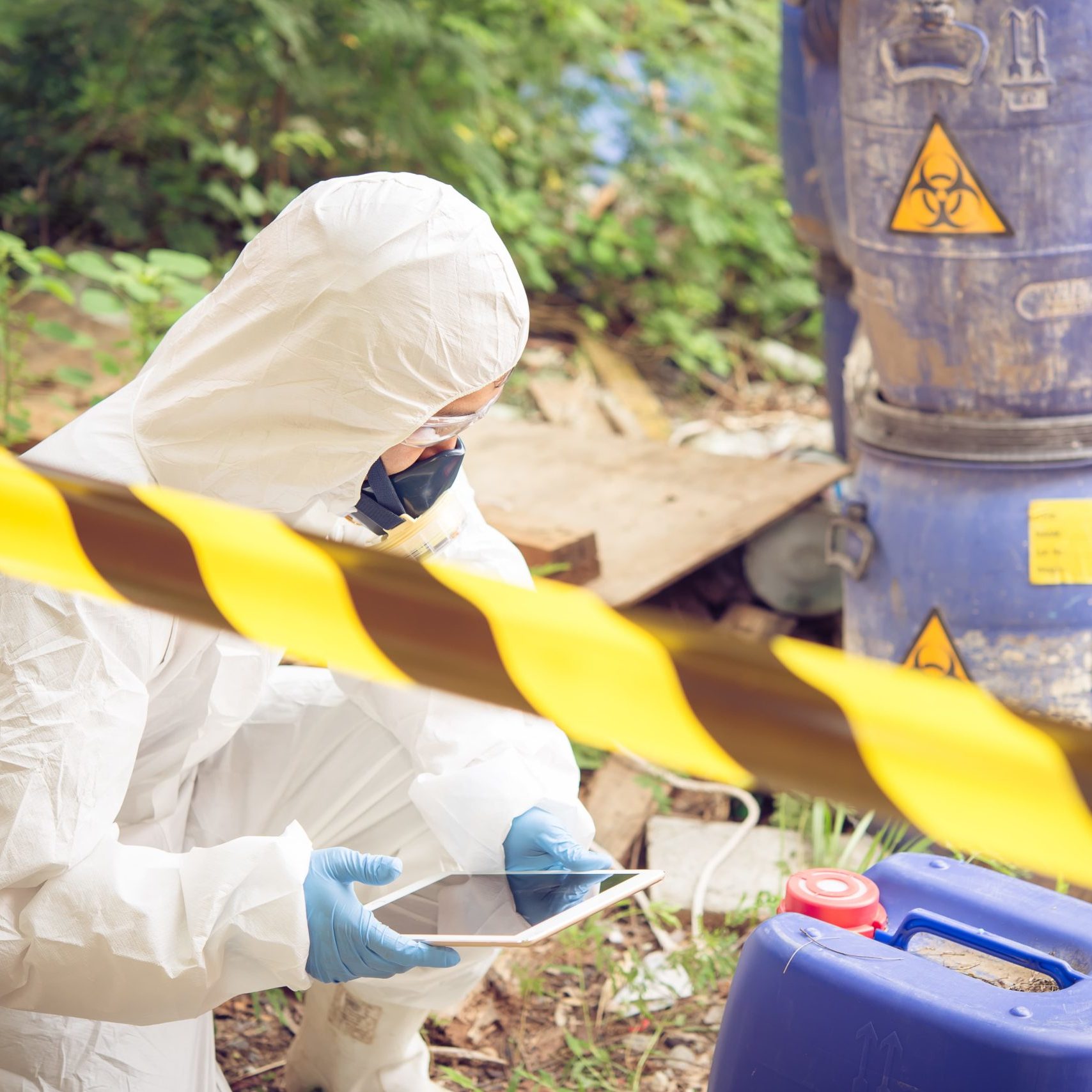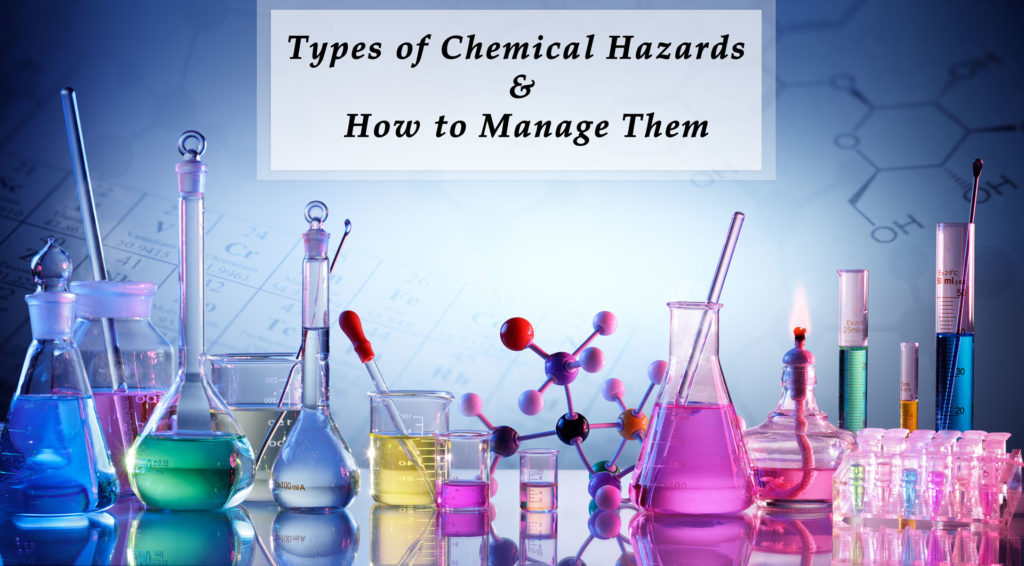
Types of Chemical Hazards and How to Manage Them
Industrial development and increasing demand for diverse goods and services to cater to the increasing whims and needs of humanity have resulted in chemicals being utilized in many products and processes. This has increased the chemical exposure of people, both at home and in the workplace. Therefore, exposure to chemicals and their harmful effects has spread across the globe at alarming rates causing a rise in health problems and negatively affecting worker safety.
Chemical hazards are mainly caused by the characteristics of chemical substances that may cause explosions, fires, or corrosions; or emit poisonous gases or mini particles. Often, chemical substances react negatively when exposed to, or mixed with, other materials or chemical substances. For instance, asbestos particles are usually dispersed in the atmosphere when moved.
Routes of Chemical Exposure
While the use of chemicals in processes, production, and goods has benefited people in many ways, these chemical substances are also the cause of chemical hazards. There are several routes of chemical exposure as described below.
- Inhalation – that is breathing in toxic vapors or small chemical particles
- Absorption – such as direct exposure to the skin by touching a chemical substance without any protection such as wearing gloves.
- Injection – that is when a sharp contaminated object or needle accidentally penetrates a worker’s body (such as hand or foot)
- Ingestion – that is when toxins are accidentally swallowed
Human biology allows chemicals and other toxic substances to enter the body in different ways. The most common is inhalation when harmful gases are present in the atmosphere. Another is through direct contact of the skin with the hazardous substance. Injection of a hazardous chemical or contaminated substance is possible if employees are working in laboratories or medical facilities dealing with contaminated needles and other infectious materials. Ingestion is the fourth method, but it is a less common form of exposure in the workplace.
Types of Chemical Hazards in the Workplace
There are several types of chemical hazards in the workplace. While there are several classifications for these chemical hazards, many of these hazardous chemical substances fall within these 9 classifications.
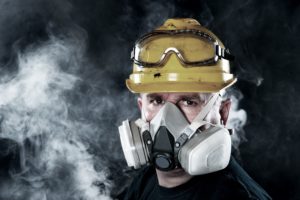
Asphyxiants

Corrosives

Irritants
Chemical hazards that are classified as irritants cause harm to the eyes, skin, or respiratory tract of a person. Irritants are either highly, moderately, or slightly water-soluble. The hazards can manifest as redness, rashes, inflammation, coughing, or hemorrhaging. Irritants are mostly short-term severe illnesses but can also have long-lasting side effects in some people. People can also have an allergic reaction to some of these chemical materials with long-lasting health impacts or even be fatal.
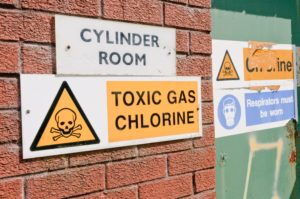
Sensitizers

Carcinogens
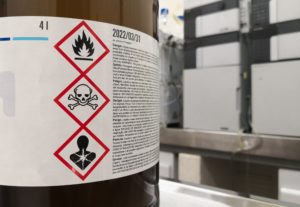
Mutagens
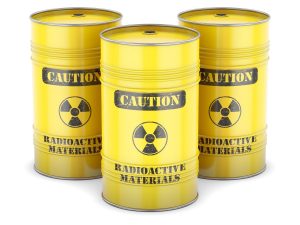
Teratogens

Reactive
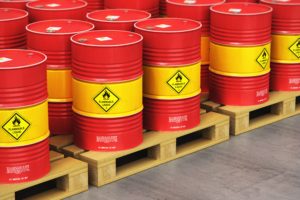
Flammable
For a complete list of workplace chemicals and their hazards, refer to the NIOSH Pocket Guide to Chemical Hazards (NPG).
Managing Workplace Chemical Hazards
The Occupational Safety and Health Administration (OSHA) guides employers to protect employees in the workplace from chemical hazards. Using the strategy of the Hierarchy of Controls, developed by the National Institute for Occupational Safety and Health (NIOSH), the recommendations from the most effective to the least effective ways to control chemical hazards are as follows:
- Elimination/Substitution – where the need for hazardous chemical usage is completely removed or an alternate less or non-hazardous chemical is used.
- Engineering Controls – where employers must implement changes that are physical to the workplace helping to reduce exposure to chemical hazards of workers using or handling hazardous chemical substances.
- Administrative and Work Practice Controls – changing how a work task is performed or establishing efficient workplace policies, protocols, processes, and control and monitoring mechanisms.
- Personal Protective Equipment (PPE) – using PPE such as respirators, gloves, protective full-body suits, etc., can help in reducing the workers' direct contact with the hazardous chemical.
In addition to implementing the Hierarchy of Controls, employers can also benefit from following OSHA’s guidelines on Permissible Exposure Limits (PELs) for chemical hazard exposures to workers. NIOSH has provided Recommended Exposure Limits (RELs), while the American Conference of Governmental Industrial Hygienists (ACGIH) gives guidance in the form of Threshold Limit Value (TLVs) and Biological Exposure Indices (BEIs). Read more here.
OSHA also recommends hazard communication in the form of labeling containers, putting up safety signs, using pictograms, and developing safety data sheets. OSHA’s Hazard Communication Standard aids employers and employees in better understanding chemical hazards in the workplace and identifying and implementing methods to minimize and control workplace chemical hazards. The Standard also recommends training for employees handling hazardous chemicals as part of their regular work tasks as well as during emergencies when spills or exposures to chemical substances can occur in the workplace.
Environmental Mixed Exposures
Environmental mixed exposures refer to situations where individuals, communities, or ecosystems are simultaneously exposed to multiple environmental risks or stressors that can have both positive and negative effects. These exposures often arise due to the interconnectedness of environmental factors and their impacts on various aspects of human and ecological well-being. Here are some examples of environmental mixed exposures:
1. Climate Change and Biodiversity Loss:
Climate change can lead to shifts in temperature and precipitation patterns, affecting ecosystems and habitats. These changes might also contribute to the loss of biodiversity as species struggle to adapt or migrate.
2. Air Pollution and Extreme Weather Events:
Populations in urban areas might face exposure to both chronic air pollution, which can lead to respiratory and cardiovascular issues, and extreme weather events like heatwaves and storms, which pose immediate dangers.
3. Water Scarcity and Soil Degradation:
Regions facing water scarcity may also experience soil degradation due to overuse, poor land management practices, or contamination. These combined stressors can impact agricultural productivity and water availability for communities.
4. Land Use Changes and Habitat Fragmentation:
Urban expansion and agricultural development can result in habitat fragmentation, where ecosystems are divided into smaller, isolated patches. This can lead to negative impacts on biodiversity and ecosystem services.
5. Chemical Pollutants and Ecosystem Health:
Chemical pollutants from industrial activities or agricultural runoff can affect both aquatic and terrestrial ecosystems. These pollutants can disrupt ecosystem balance, impacting species diversity and human health.
6. Coastal Development and Sea Level Rise:
Coastal areas experiencing rapid development might be vulnerable to both sea level rise due to climate change and increased storm surges, leading to increased flood risks.
7. Deforestation and Carbon Sequestration:
The loss of forests reduces the capacity to sequester carbon dioxide, contributing to climate change. Deforestation also affects biodiversity and disrupts local hydrological cycles.
8. Water Pollution and Food Security:
Contaminated water sources can compromise agricultural productivity and food safety. Communities that rely on polluted water for irrigation and consumption can face health risks and reduced food availability.
9. Urbanization and Green Space:
Rapid urbanization can lead to reduced green spaces and increased heat island effects. This can impact both human health and urban ecosystems.
10. Mining Activities and Water Quality:
Mining operations can introduce pollutants into water sources, affecting both aquatic ecosystems and communities dependent on clean water for drinking and livelihoods.
11. Renewable Energy Expansion and Land Use Conflicts:
While transitioning to renewable energy sources is positive for reducing carbon emissions, conflicts can arise over land use for renewable energy infrastructure, potentially impacting ecosystems and local communities.
Addressing environmental mixed exposures often requires integrated and holistic approaches that consider the interconnectedness of various factors. Policy-making, sustainable resource management, and community engagement are crucial for minimizing negative impacts and maximizing positive outcomes in the face of complex environmental challenges.
Online Training Courses for Chemical Hazards
Training is an important aspect of ensuring worker safety when dealing with chemical hazards. We provide a range of safety training courses that can support employers to safeguard their workers while they carry out work tasks involving hazardous chemicals and other substances.
Below are a few online safety training courses that are dedicated to hazardous chemical safety or include detailed lessons on chemical hazards. Questions such as the types of chemical hazards, how to minimize exposure and risk of chemical hazards, and workplace safety protocols when dealing with a range of hazardous chemicals and hazardous materials are answered in these courses in line with the topic of the training course.
For the full range of OSHA-compliant training programs, click here.
We also offer group instructor-led training programs either at the client's premises or via virtual platforms for large corporations and employers with a large workforce.

